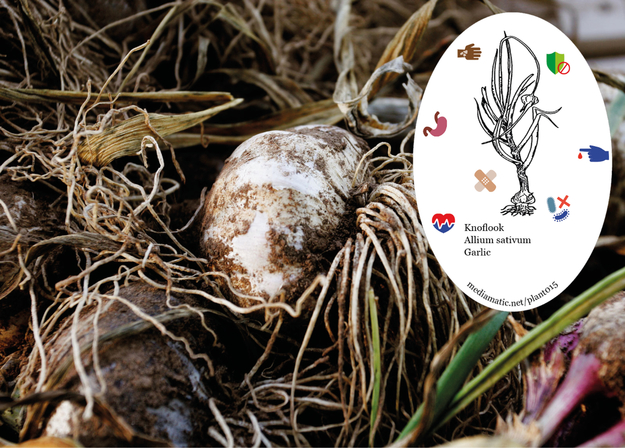Garlic has a very long folk history of use in a wide range of ailments, particularly ailments such as ringworm, Candida and vaginitis where its fungicidal, antiseptic, tonic and parasiticidal properties have proved of benefit. The plant produces inhibitory effects on gram-negative germs of the typhoid-paratyphoid-enteritis group, indeed it possesses outstanding germicidal properties[240] and can keep amoebic dysentery at bay. It is also said to have anticancer activity. It has also been shown that garlic aids detoxification of chronic lead poisoning. Daily use of garlic in the diet has been shown to have a very beneficial effect on the body, especially the blood system and the heart. For example, demographic studies suggest that garlic is responsible for the low incidence of arteriosclerosis in areas of Italy and Spain where consumption of the bulb is heavy. Recent research has also indicated that garlic reduces glucose metabolism in diabetics, slows the development of arteriosclerosis and lowers the risk of further heart attacks in myocardial infarct patients. Externally, the expressed juice is an excellent antiseptic for treating wounds. The fresh bulb is much more effective medicinally than stored bulbs, extended storage greatly reduces the anti-bacterial action. The bulb is said to be anthelmintic, antiasthmatic, anticholesterolemic, antiseptic, antispasmodic, cholagogue, diaphoretic, diuretic, expectorant, febrifuge, stimulant, stings, stomachic, tonic, vasodilator. The German Commission E Monographs, a therapeutic guide to herbal medicine, approve Allium sativum for arteriosclerosis, hypertension, high cholesterol levels. Source: https://pfaf.org/
Garlic
Allium sativum
Find more about this plant on Wikipedia.
